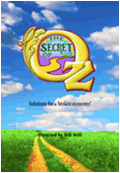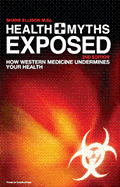THIMEROSAL,
AUTISM'S DADDY
PART 1 of 2
By
Jon Christian Ryter
October 28, 2010
NewsWithViews.com
(Author's Note: In the last few days, I've had about a half-dozen emails with links sent to me referring me to an old story I wrote in 1999, and asking me where the URL was on my website. It doesn't exist. I wrote the story on an old AOL subdomain website some two years before my website was created. Since there appears to be an interest in this subject 11 years later, I decided to try to reconstruct the information as best I could and place it here for those who might still be interested in the material today.
I wrote the story (which appears under this italicized section) on June 30, 1999 and posted it on July 1st of that year. The report, or those parts of it that I actually wrote, came into my possession from an official in the Clinton Administration'. This individual and I had a discussion a week or two earlier on the possible links between Alzheimer's and aluminum, based on two totally unrelated reports that crossed my desk. The first one, a puff piece for the aluminum industry on the increased use of aluminum in cookware in the 20th century and the second, an increase in the reported cases of Alzheimer's Disease in the elderly over the second half of the 20th century. When I saw the statistics of the second report there appeared to be an uncanny connection to the first.
It was by mere chance that I ran into this particular DHHS official and raised the question if there were any statistics I could find on either the CDC or DHHS websites that showed a correlation between the increased use of aluminum cookware and the rise in reported cases of Alzheimer's Disease. The official, raised a counter-question, asking if I would be surprised to learn that the causes of Alzheimer's might be remarkably similar to the causes of autism. The official scribbled a DHHS web address on a scrap of paper and handed it to me. "This should get you going in the right direction," I was told. Only it didn't. It was a password protected URL and I didn't have the password. Yet, after making a phone call,w ithin two days I had several publicly available DHHS documents (if you knew where to find them), some of which defended the argument that Autism was not caused by the mercury suspension, ethylmercury, that is used to preserve the shelf-life of vaccines and even some over-the-counter items we buy today and reports from several medical doctors arguing their reasons why thimerosal was the cause of autism.
While there were no reports in the files I received from Dr. Paul Offit, he is the public face of the scientific consensus that vaccines containing ethylmercury pose no risk to humans. Offit is the Chief of the Division of Infectious Diseases, Professor of Vaccinology and Professor of Pediatrics at the University of Pennsylvania. In a paper Offit wrote, he noted: "...Certain types of bacteria in the environment can change mercury into methylmercury. Methylmercury makes its way through the food chain in fish, animals and humans. At high levels it can be toxic to people. Thimerosal—a preservative still used in the influenza vaccine—contains a different form of mercury called ethylmercury. Studies comparing ethylmercury and methylmercury suggest that they are processed differently in the human body. Therefore, ethylmercury (the type used in vaccines) is much less likely than methylmercury (the type of mercury in the environment) to accumulate in the body and cause harm."
Dr. Richard Kao, DDS, Ph.D, Adjunct Professor of the University of Pacific disagrees. Since ethylmercury is used in both medicine and dentistry, Kao did an extension study on the impact of mercury on the environment and human health. In the abstract on his study, Kao studied the major toxicology concerns about mercury in all forms but concentrated on methylmercury (CH3Hg+) and ethylmercury (CH3CH2Hg+). It seems the primary difference between them is that ethylmercury clears the body in about one-third the time it takes methylmercury to pass through the system and be excreted from the body through feces or urination. The problem is both are equally toxic. It's just the long term risks are considerably less with ethylmercury. But, the risk exists. And, scientists have always known the risks were there. In their view, the risks were outweighed by the benefits of the vaccines and other medications whose shelf lives were prolonged by using thimerosal, a preservative.
The conclusions reached by Dr. Kao were supported by a study done by the National Academy of Science in conjunction with the Institute of Medicine and the National Research Council. The study focused on what appeared to me, when I read it for the first time, as unrelated to the thimerosal issue since it dealt with bacterial infections caused from gingivitis and bronchial irritations and even pneumonitis. However, the Kao report mentioned something I did not see again until I read the National Academy of Science report entitled Toxicological Effects of Methylmercury in the National Academies Press. A term I was not expecting popped up and made me recall Dr. Kao's article. It referred to the use of amalgams (silver, copper, tin and mercury) in both dentistry and medicine. In the basic math of adding 2 + 2 and coming up with "4," I realized that only a small percentage of the children being vaccinated with vaccines containing thimerosal developed autism or other attention deficit disorders, just as only a small percentage of adults using aluminum cookware develop Alzheimer's in their later years. I believe Dr. Kao may have answered the "why."
In his report, Dr. Kao mentioned to two seemingly unrelated points. First, he mentioned amalgam-associated mercury vapors. Second, he mentioned bacterial infections in the body from diseases like gingivitis, bronchitis and pneumonia as catalysts that might metabolize ethylmercury into long-life methylmercury. (This was the point raised in the article, below.) Add to that the opinion of Dr. Kao that bacterial infections (usually the reason for getting a juvenile vaccination) can metabolize a release of mercury vapors from the amalgams in the vaccine sufficient to send toxins through the bloodstream to the human brain. If those toxins are converted from ethylmercury to methylmercury then the puzzle—and the question of whether or not amalgams cause both autism and Alzheimers—is solved.
NOTE: I came into the possession of the second draft of a response being prepared by the Interagency Group [IAG] of the National Vaccine Program of the Centers For Disease Control for release sometime late Friday afternoon. The CDC, like all other bureaus of government recognize that when you need to release negative information, release it on Friday since most Americans ignore the news on the weekends. The concern of the IAG staffer who turned this document over to me was that the CDC was engaging in a coverup that was deliberately attempting to play down the danger of the chemical thimerosal, an organomecurial preservative used to stabilize many of the vaccines, immoglobins and some food products simply because the government cannot afford to dispose of its entire inventory of vaccines containing this substance.
The European Agency for the Evaluation of Medicinal Products issued a white paper on June 29, 1999 announcing the conclusions of a study initiated by the EAEMP in conjunction with European Pharmaeopocia, the WHO and "relevant" drug manufacturers in Europe. The FDA was represented at this meeting by Dr. Norman Baylor.
The purpose of this meeting, which was held on April 19, 1999 was to discuss the ramifications of the findings of CPMP Working Document CPMP2286/98. This meeting was followed by yet another meeting on May 17, 1999. The meeting was chaired by the CPMP's Multidisciplinary Group. The sole objective on its agenda that day was to discuss a plan of action to be followed with respect to the drug Thimerosal, which has been found to create cumulative levels of toxicity in those who ingest it through vaccination.
Thimerosal is an organomercurial preservative that is used to stabilize, or preserve the "shelf life" of most vaccines, immunoglobins, and many other medical products. The awareness that a problem existed with thimerosal first arose in 1990 when the World Health Organization began to notice cases of allergic reactions to thiomerosal due to the presence of methylmercury in the bloodstreams of those who were inoculated with vaccines containing thimerosal. (thimerosal, under the right circumstances, metabolizes as methylmercury, a very toxic, very long-lasting substance.)
If you remember the "mercury-poisoning" scare a few years ago when Americans were warned not to eat fish netted in certain areas of the world, you will understand the concern discussed at that time by the IAG. Mercury is a highly toxic element which, once ingested, is not quickly or easily expelled from the body. Residue will continue to build with each additional ingestion until it reaches a damaging level in the body. The concern expressed by WHO in 1990 with respect to methylmercury or ethylmercury, the metabolized form of thimerosal, was that there existed no international recommendations on the maximum allowable intake of this chemical in infants and small children.
Because standards did not exist, WHO was concerned that the accumulated affect of more than 200 Mg of methylmercury in the system of a fetus or infant could cause moderate to severe brain damage that would result in a rise in learning impaired children. In the rebuttal being prepared at this moment by the IAG for the National Vaccine Program Office of the CDC, the planned statement (as of 4:00 p.m. on June 30) was: "The WHO, EPA, ATSDR, and FDA created safety exposure guidelines for Hg based on studies of infants born to women who chronically ingested high concentrations of methylmercury. These safety guidelines include safety factors of 3 to 10-fold."
To support this statement, they will declare that: "Since 1997, the FDA, as mandated by FDAMA, has prepared and analyzed lists of Hg containing drugs and foods. In addition, the European Agency for the Evaluation of Medicinal Products formed a working group on thimerosal and, with input from the FDA, recommended that for [the] vaccination of infants and toddlers, the use of vaccines without thimerosal and other mercurial-containing preservatives should be encouraged; however, in order not to jeopardize vaccine supplies and immunization programs, it is advisable to introduce requirements for the elimination of organomercurial preservatives in vaccines on a gradual basis."
The "lord" giveth and the "lord" taketh away. In other words, on one hand the report suggests that from 1990 WHO warned that studies were conducted to determine the "safety levels" of thimerosal and the IAG is assuring the public that the health care officials and physicians who are administering vaccines containing organomercurial preservatives are conscious of the potential toxicity to infants and toddlers if an accumulated range in excess of 200 Hg is reached, and would no longer vaccinate children, or prescribe other medical products containing methylmercurial preservatives.
| Subscribe to the NewsWithViews Daily News Alerts! |
Second, the IAG recognizes that since too many of its stores of vaccines contain methylmercurial preservatives that it cannot afford to dispose of them since, as they state in the draft report, to do so would jeopardize their national vaccination programs. In other words, the IAG and the National Vaccine Program would rather play with words in order to minimize the danger to both mothers and infant and toddler children, and in some cases, the unborn fetus, because it will prove to be either too expensive or too inconvenient to dispose of their stockpile of mercurial-based vaccines because, in their collective brainstorming on June 30, the risk of permanent neurological damage to those ingesting thimerosal is, in their "public relations opinion," minimal. For part two click below.
Click here for part -----> 2,













 Share
This Article
Share
This Article






